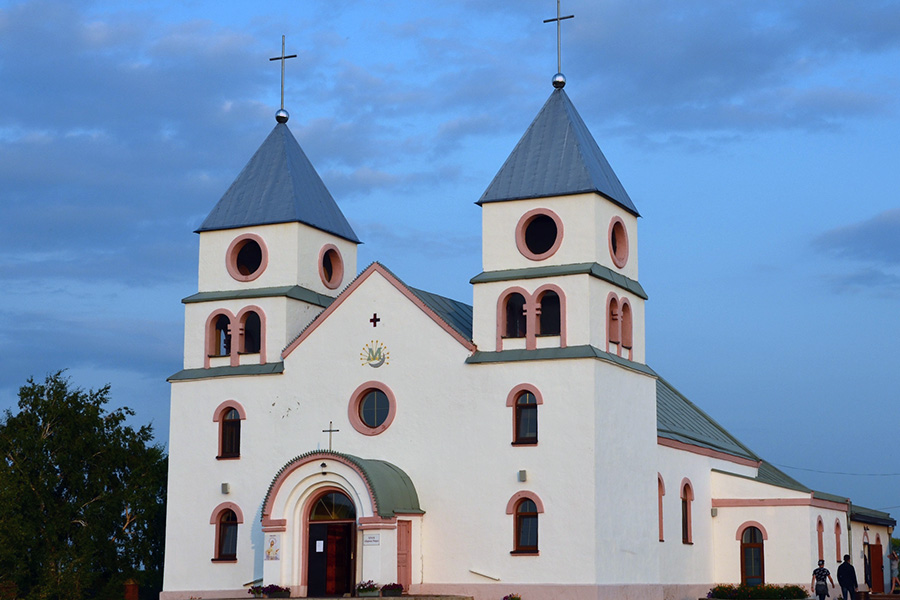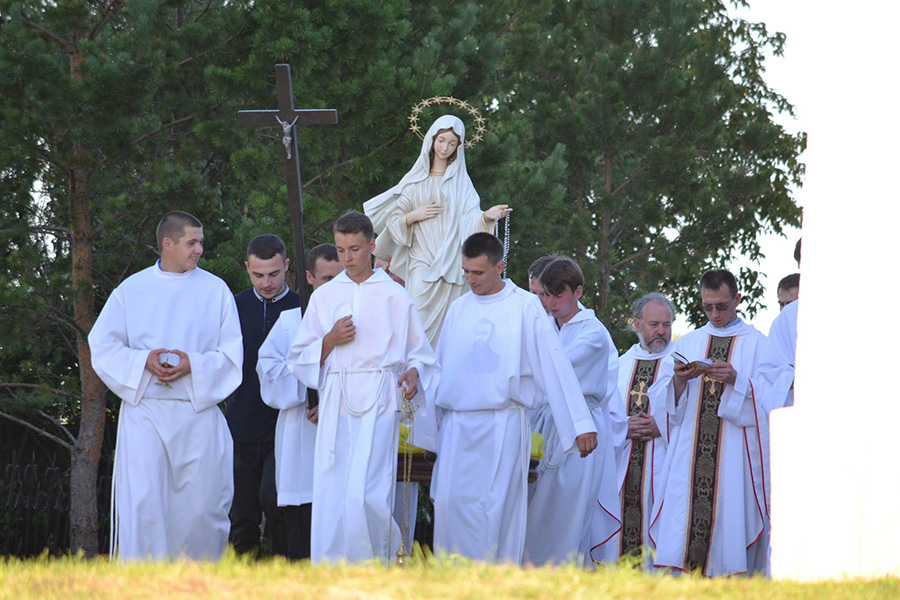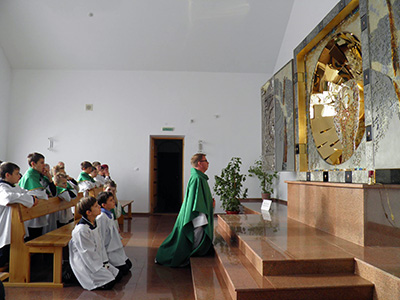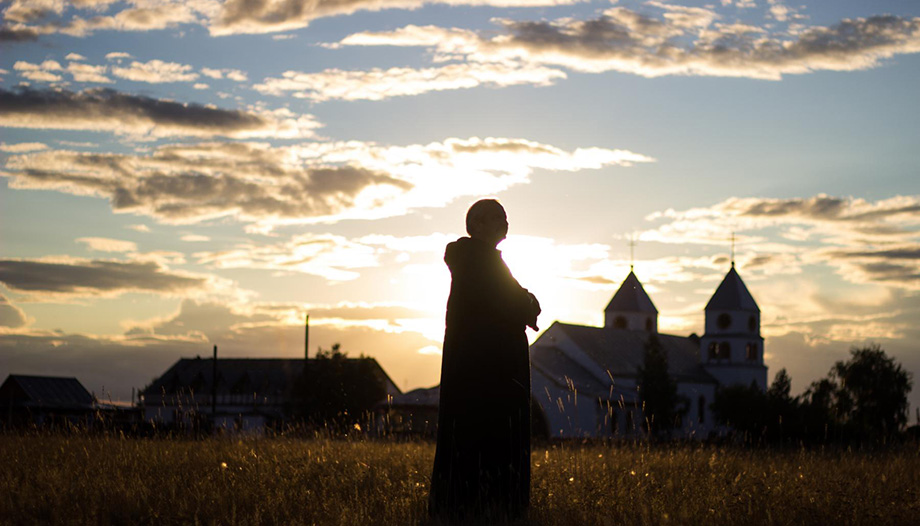There are few places as isolated as this small village in Ozernoye, in the north of Kazakhstan. Its location, far from any habitable nucleus, roads and big cities, made it a perfect destination for deportation. In 1936, in successive waves, hundreds of deportees of Polish and Ukrainian origin arrived in these areas - there is talk of 70,000. Their only crime against the Soviet regime was often their faith. The same faith that made them trust that in the midst of these deserted lands they could start again a minimally dignified life, with God's help.
The experiences and memories of those years are collected historically or in a novelized way in great books: The infinite steppe, Zuleijá opens her eyes.... Novels full of strength, portraying the hardships of men and women, often heroic, who defied nature in its most extreme forms, to rebuild a life that had been destined by the Soviet authorities to disappear.
These deportees (estimated by hundreds of thousands both in Central Asia and in Siberia) built villages, opened mines, mastered the climate, or better, reached a tacit agreement with the extreme climatic conditions, so that at least the survival of some could be guaranteed: a nucleus of faith, an oasis in an inhospitable land in the middle of the steppe.

Under the protection of the Virgin
It was this faith that made them turn strongly to Our Lady, asking for the survival of their families. The cold and the extreme conditions of the first years took away dozens of deportees: the winters in this almost Siberian area can bring the thermometer down to -40 degrees, with freezing winds that make the thermal sensation even worse. That's why the arrival of spring always meant a new rebirth, the astonishment that, once again, they could go on living.
But famine remained a real threat that took many lives. The appearance of a seasonal lake (formed by snowmelt) full of fish in March 1941, around the feast of the Annunciation, was considered by Catholics in the area as an answer of the Virgin to their insistent prayers.
The springs of melting snow were suddenly clogged, and a lake, 5 km wide and 7 meters deep, was miraculously formed near the village. The fish that also miraculously appeared in this lake saved many lives.
Since then, the enclave has always remembered this special protection of the Virgin. Around the lake, when it can be seen (since it is seasonal, there are whole decades in which the weather conditions do not allow it to form), a small village was built, and over the years, a church, taking into account the relaxation of the restrictions that somewhat improved the living conditions of the deportees in that area.
The initial construction was very simple, but it already constituted the nucleus of what would eventually become a landmark of Catholicism in this multi-ethnic, Muslim-majority country.
With the formation of modern Kazakhstan after its independence in 1991, this small settlement in the Burabay district of the Akmola region of northern Kazakhstan grew.
A much larger temple was built in 1990 with the permission of the authorities. A statue of the Virgin was erected in 1997, on top of a stake of about 5 meters, which sometimes results in the center of the lake, depending on its seasonal formation. In a maternal gesture, the Virgin of that statue delivers fish to the faithful who approached her in their request in times of hunger.

The present parish and church of Our Lady, Queen of Peace, is today a center of pilgrimage that contains several places of significance for the faithful of this and neighboring countries.
On July 11, 2011 the Ozernoye temple was officially declared a national shrine of St. Mary, Queen of Peace, patroness of Kazakhstan.
In successive years the local bishops have consecrated the immense and vast regions of this part of the planet to Our Lady precisely here: in 2020 Kazakhstan was consecrated in this place to Our Lady.
Recently, on May 1, 2022, the bishops of the new Bishops' Conference of Central Asia (which includes eight countries: Kazakhstan, Kyrgyzstan, Tajikistan, Uzbekistan, Turkmenistan, Mongolia, Afghanistan and Azerbaijan), consecrated to Our Lady not only the entirety of those countriesbut of its people, hopes and challenges.
The Altar of Peace
There are other places of enormous significance in this place. In one area of the temple, the second "Altar of Peace" was installed years ago.
A huge monstrance, full of symbolism, in which the Holy Eucharist is permanently adored by the local faithful, the Discalced Carmelite nuns of a nearby convent and the Benedictine monks from Switzerland who also live here.
This altar, the second of twelve (in memory of the twelve stars of the crown of the woman of the Apocalypse, image of the mother of God) that are planned to be installed throughout the planet, has the special intention of offering God an uninterrupted prayer for peace.

The first altar is based in Bethlehem, having moved after a brief period in Jerusalem. The artists who built this other Ozernoye altar, the "Kazakhstan altar" included ethnic Kazakh motifs.
The altar offers an aesthetic catechesis, and has in its interior relics of St. John Paul II and St. Faustina Kowalska, as well as fragments of the Old Testament, which for this country, an amalgam of ethnic groups and religions, aims to create bridges, rescuing and bringing closer the origin of other monotheistic religions.
The chapel that contains the altar has in its front plane a large window that opens the view to the infinite and deserted steppe. This symbolism is also intended to channel the prayers that are raised in this place for peace throughout the world (somehow, the invocation of Our Lady in this place is providentially confused, since the same word used in Russian, "mir", is used to designate peace and also world).
One last place rescues perhaps the saddest memory of these steppes. 12 km from Ozernoye, in the Ahimbetau area, there is a huge cross, erected in 1998, as a symbol and memory of the tens of thousands of victims of the repression carried out in Kazakhstan during the years of Soviet domination.
The title familiarly given by the inhabitants of the area is the "Golgotha of Kazakhstan", and its symbolism is loaded with force: considered the geographic center of Eurasia, exactly halfway between Fatima and Hiroshima, the literal translation of the name of the area in Kazakh indicates it as "the mountain of consolation". And the letters written at the foot of the cross in four languages are truly consoling:
"To God-all Glory
To the people - peace
To the martyrs - the kingdom of heaven
To the people of Kazakhstan: thank you
To Kazakhstan: prosperity "
With all these reasons, it is obvious that the number of pilgrims visiting Ozernoye is increasing every year: international meetings of young Catholics are held, pilgrims from nearby countries come here, and the Kazakh government has even included the route among the recommended destinations on the map of the "Sacred Geography of Kazakhstan", a project that lists the places of religious and spiritual symbolism in the country.








